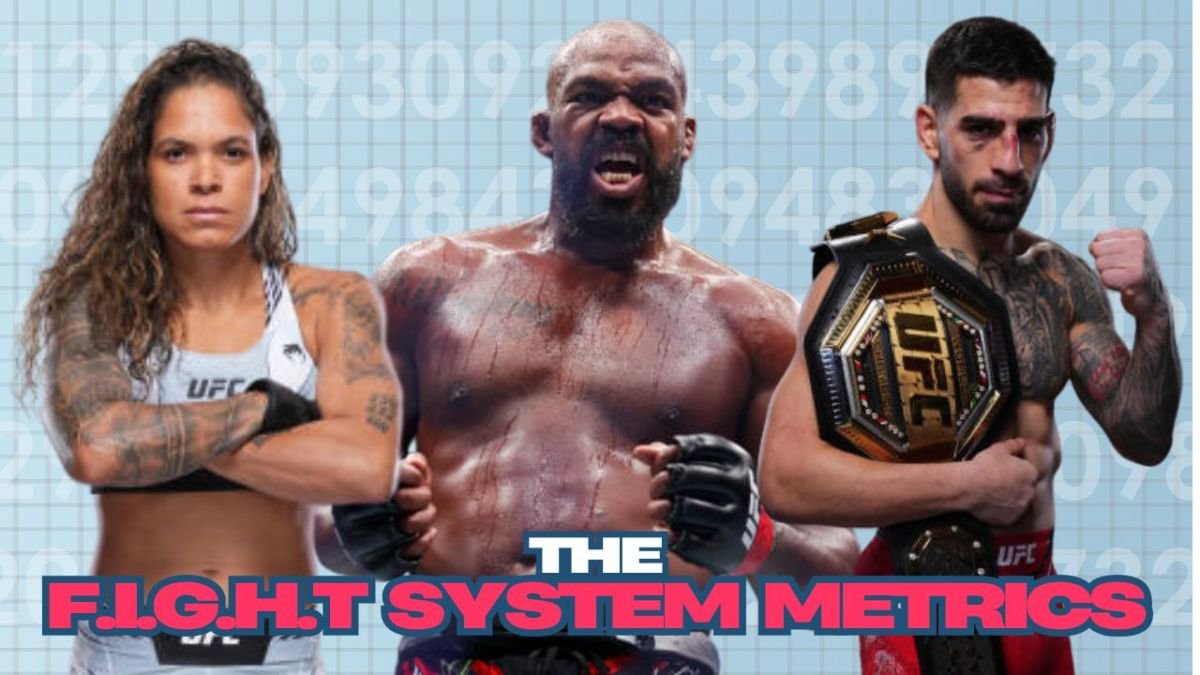
The F.I.G.H.T. System™ Glossary
Welcome to the F.I.G.H.T. System™ Glossary, your hub for understanding the custom analytics I use to evaluate UFC events beyond just the final results. F.I.G.H.T. stands for: Fighter Impact & Grading Highlight Tool.
I created these metrics and they are being unveiled for the first time here on Athlon Sports – MMA.
The F.I.G.H.T. System are designed to add depth, clarity, and debate to how we experience MMA across the board. They're also built to be accessible by the common fan so as to not involve uber-complicated formulas that will serve as a deterrent for the fight community.
With that said, let's dive into the metrics.
FIGHT SCORE
What It Is:
Fight Score is a single number assigned to an entire bout—not to the individual fighters. It captures the fight’s total value based on pace, drama, technique, stakes, and damage.
How It’s Calculated:
- KD (Knockdowns): Total knockdowns in the fight. 5pts for every knockdown.
- FIN (Finishes): 5pts for a finish, 0 for a decision.
- MS (Momentum Swings): Back-and-forth shifts. 5pts for every one.
- CR (Crowd Reaction): Energy level from fans. Scale: 0–10. A 10 would be a raucous crowd during the fight.
- ACTION RATE: Measured by combined significant strikes, successful takedowns and submission attempts per round (Actions / Number of Rounds
- TECH (Technique Displayed): Skill level of striking or grappling. Scale: 0–10. Ten would be masterful striking or grappling sequences. A zero would be amateurish striking attempts and horrendous takedown or submission defense. This will be rare in the UFC.
- DAMAGE (Blood, Swelling, Bruise): Applies to both fighters. Scale: 0–10. A ten for two bloody fighters, a zero for both fighters without a mark on their faces or bodies.
- GOOD ROUNDS: 0–5 scale. Each round with compelling action counts for one point.
Why It Matters:
Fight Score is your answer to “Was that fight any good?” It gives fans a real-time grading system to judge classics, sleepers, or duds—without relying on post-fight buzz or marketing hype.
PECS (Post-Event Card Score)
What It Is:
PECS grades an entire UFC card—main and prelims—on its overall entertainment, significance, and viral moments.
How It’s Calculated:
Five weighted factors determine the score:
- Finish Rate – How many fights ended in a finish
- Star Power – Major stars and champions in action
- Stakes – Titles and/or Top-10 ranked fighters in action
- Crowd/Viewer Heat – Loud crowd (sorry Apex) or viral post-event content
- Wild Moments – You'll know it when you see it.
Each is rated from 1–10. The final score is converted into a letter grade (A+ through F).
Why It Matters:
Not every fight night is created equal. PECS tells you whether a card was legendary or forgettable, even if the main event delivered.
PPR (Pace-Per-Round)
What It Is:
PPR tracks the intensity and activity of a fight by measuring total significant actions per round.
How It’s Calculated:
PPR = (Total strikes + takedown attempts + submission attempts + major transitions) ÷ Total rounds
Why It Matters:
Some fights don’t end in knockouts—but are still wars. PPR helps surface those high-octane battles that often get missed in highlight reels.
DVR (Damage-to-Victory Ratio)
What It Is:
DVR reveals how much punishment a fighter absorbed en route to a win. It's not about who won—it's about how costly that win was.
How It’s Calculated:
DVR = Total significant strikes absorbed ÷ Victory multiplier
- KO/Sub = 0.8
- Unanimous Decision = 1.0
- Split Decision = 1.2
Why It Matters:
A brutal win today could cost a fighter months—or a career—tomorrow. DVR adds a durability lens to every victory.
DLR (Damage-to-Loss Ratio)
What It Is: DLR (Damage-to-Loss Ratio) reveals how damaging a defeat was. It doesn’t just ask “Did they lose?”—it asks “How much did they pay for it?”
How It’s Calculated: DLR = Total significant strikes absorbed ÷ Loss multiplier
- KO/TKO = 1.2
- Submission = 1.0
- Unanimous Decision = 0.8
- Split/Majority Decision = 0.6
Why It Matters: Some fighters walk away from a loss intact. Others take a beating that changes everything. DLR shows which fighters might need medical time off—or may never be the same.
Why The F.I.G.H.T. System Is Different
These aren’t just stat recaps. They’re judgment calls made through a consistent lens that values storytelling, fighter health, pacing, technique, and fan impact. They give fans new tools to debate, compare, and remember the best—and worst—moments in MMA.

